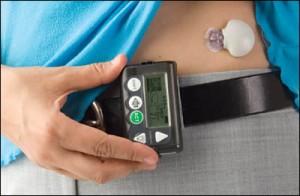Continuous blood glucose monitoring
Continuous Blood Glucose monitoring helps people with diabetes manage the disease and avoid its associated problems. A person can use the results of glucose monitoring to make decisions about food, physical activity, and medications. The most common way to check glucose levels involves pricking a fingertip with an automatic lancing device to obtain a blood sample and then using a glucose meter to measure the blood sample’s glucose level.
Continuous blood glucose monitoring (CGM) systems use a tiny sensor inserted under the skin to check glucose levels in tissue fluid. The sensor stays in place for several days to a week and then must be replaced. A transmitter sends information about glucose levels via radio waves from the sensor to a pager like wireless monitor. The user must check blood samples with a glucose meter to program the devices.
Continuous blood glucose monitoring systems are more expensive than conventional glucose monitoring, but they may enable better glucose control. Users can set alarms to alert them when glucose levels are too low or too high. Special software is available to download data from the devices to a computer for tracking and analysis of patterns and trends, and the systems can display trend graphs on the monitor screen.
Some of the key factors to remember when it comes to diabetes and properly maintaining them is that Glucose monitoring helps people with diabetes manage the disease and avoid its associated problems. The most common way to check glucose levels involves pricking a fingertip to obtain a blood sample and using a glucose meter to measure the glucose level in the sample. Continuous blood glucose monitoring (CGM) systems use a tiny sensor inserted under the skin to check glucose levels in tissue fluid. A transmitter sends glucose measurements to a wireless monitor.


 Many studies have showed that North American ginseng may improve blood sugar control and glycosylated hemoglobin (a form of hemoglobin in the blood used to monitor blood glucose levels over time) levels.
Many studies have showed that North American ginseng may improve blood sugar control and glycosylated hemoglobin (a form of hemoglobin in the blood used to monitor blood glucose levels over time) levels.

